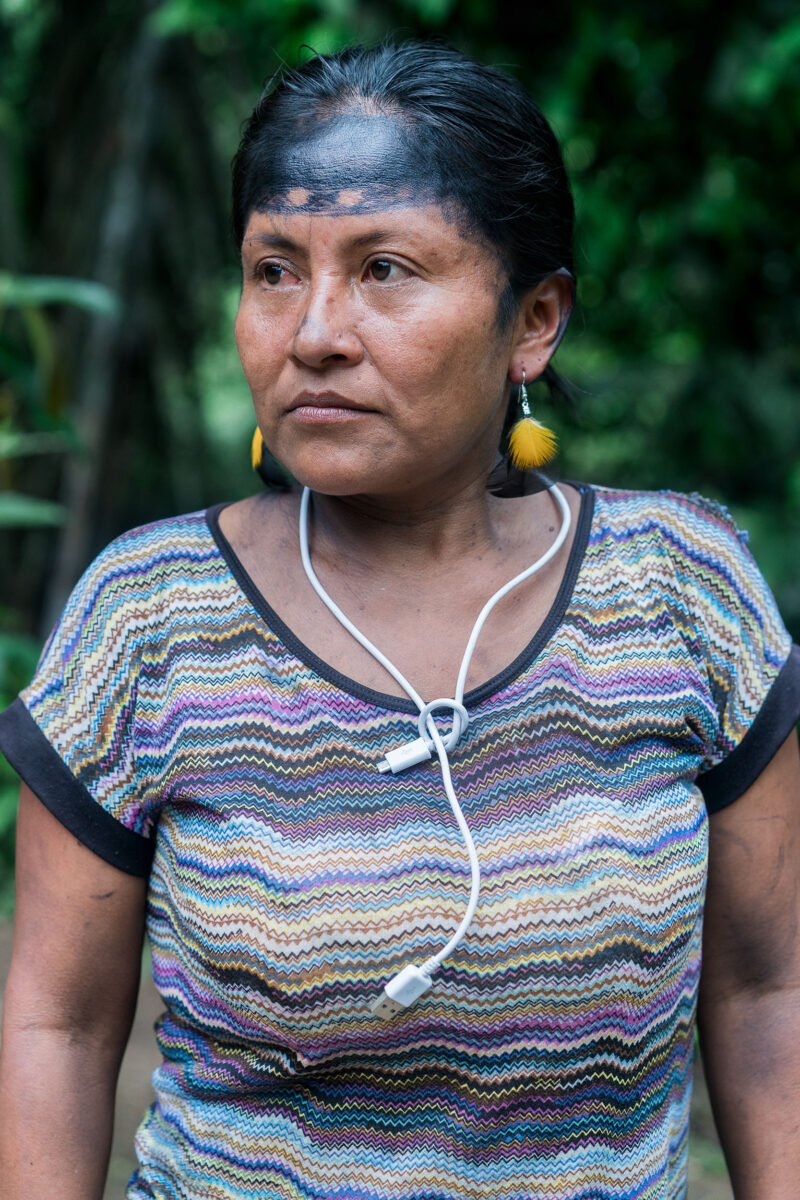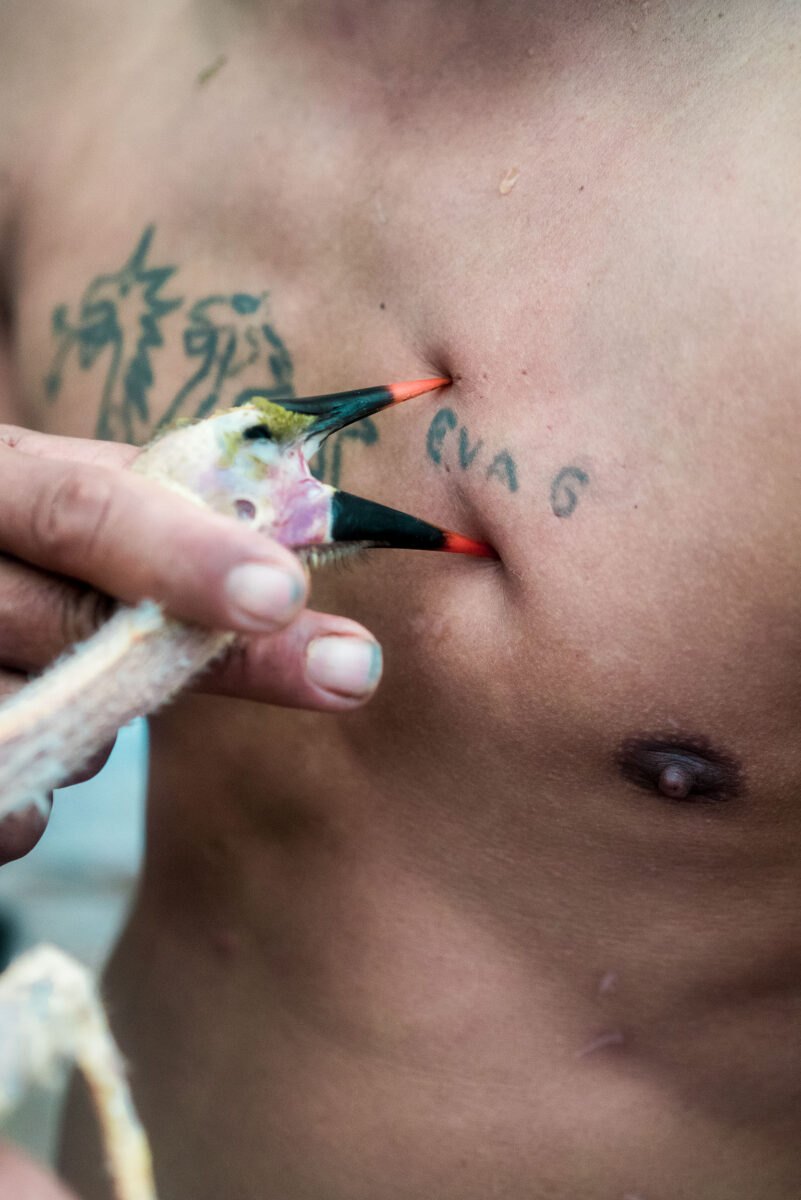A conversation with Misha Vallejo Prut

Photo series "Secret Sarayuku" by photographer Misha Vallejo Prut from Ecuador, is now on display at REGENERATE at Museum Belvédère. The photo series shows the daily life of the indigenous Kichwa community of Sarayuku, in the Ecuadorian Amazon rainforest. Noorderlicht spoke to Misha about the realization of his work, what it is like to see it exhibited as part of REGENERATE and what tips he has for young creators.
How did you apply to the festival?
Well, Eefje contacted me because I did an artist in residency program at the Docking Station in Amsterdam and part of the program was meeting curators and speaking to people within the photography industry. So I met with Eefje there. I showed her my work, and when she began working on REGENERATE, she remembered me and my work. I was really happy with that!
How was the process of actually getting your work produced and presented?
I didn’t do anything besides just sending the pictures [laughter]. I mean I have done a lot of work, making the whole project. But for REGENERATE I just send it to the team of Noorderlicht. What I like about these festivals, is being able to see what their perspective on my work is. So this is why I almost never intervene. The only thing that I ask them for is not to make it too photojournalistic, but to present the work more from a subjective point of view. Thus when people see an image, they ask themselves why is this woman, for instance, wearing a USB cable around her neck? People start questioning what they are seeing. Where is this place, why is this guy wearing a Juventus football t-shirt in the middle of the rainforest with a hat made of tapir fur?

So you did not want to explain too much?
When I spoke with Eefje about the captions, and whether it was necessary to explain each photograph, we said no. We wanted to let people use their imagination, ask questions and have the full experience. Any unanswered questions (or a lot of them), can be found on the Noorderlicht website page about ‘Secret Sarayuku’. My book Secret Sarayuku is also available in the Museum Belvédère-shop. And the interactive webdoc secretsarayaku.net is available 24/7 for free from all around the world. So, if you really would like to know what is behind the photographs, you can access the information at any given time.
Would you then consider that you are collaborating with the curator?
Yes, of course. I mean, I went to these communities. I took the raw material, such as these pictures and videos. I made my products: a book and the webdoc. This is my work and I did it all by myself. But an exhibition like this is an opportunity to collaborate, to see another perspective of your own work and of the people of the community. It’s also really interesting to collaborate with a curator that is not from South America, but has lived there. Eefje has lived in South America and she knows, more or less, how these communities work. But she also brings a new perspective, which is really far away. It is a perspective from the Netherlands.
So I am also learning from this process. It is is really nice to see how the pictures are hanged, how wallpaper is used and that the works are presented in different sizes. I love that the video is almost like another picture. If you do not pay attention, you would just think it is some other photograph. But then, yeah, it moves!

What do you think about the presentation of your work and how it was developed?
So when I first spoke with Eefje, I explained that my work is a very big jungle of information, visual information. So it did not make sense to put all the pictures comfortably on eye level or in another order. They are in a disorder, like in the jungle. If you look at the pictues you have elements that are far away or close-up, in the trees or on the ground. You have to kneel down, jump or look up. For example, for one photograph, you have to kneel down in order to see that it is a photograph of a fish. So everything is on different heights and at various distances, but at the same time it is also intimate and clustered together. We wanted to try and give some kind of sensation to the viewer of how the jungle should feel.
Is there something you wanna say to young creators?
Well, good things take time. That is one of the most important things that I learned during this process. This project took me over six years. One or two years would not have been enough. It came over time. At first, I was just making photographs. Then I started to record the audio, then I started to film, then I started to do interviews and everything became snowball-effect. It became bigger and bigger. And it is beautiful that when I first came there, I did not know what the end result was going to be. It was later on that I learned what this work was really about. So if you have a dream project or a passion, just go for it, and let time be a companion to you.
Let time be a companion, could you explain this a little bit more?
With time, I also mean in personal relationships with the community as well. Like when I went there for the first time, of course people were a bit worried like, who is this guy? Why is he taking so much pictures? Okay, I was allowed in the community, but still, they were a little bit hesitant. But several visits within the span of six years, people were welcoming, inviting me: come join us. From then on there was more intimacy. In time, people will get more confident with you and you would not feel like some sort of spy.
I can imagine that photographers struggle with balancing intimacy and invading someone’s space. How did you approached this?
You always need to be honest. I was always there with my camera clicking. So I never acted as if I was not a photographer. I always said, yes, I am a photographer. I have my cameras here and if you agree, I would like to take some pictures of you. I never hide as a photographer. And after a while, people get used to you being there with the camera going, click, click, click, click. If you hide as a photographer, people might think that you are hiding something and people do not trust you. So I have to gain their trust. I like them and I want them to like me as well, but not for the wrong reasons.
Interview by Mandy La


